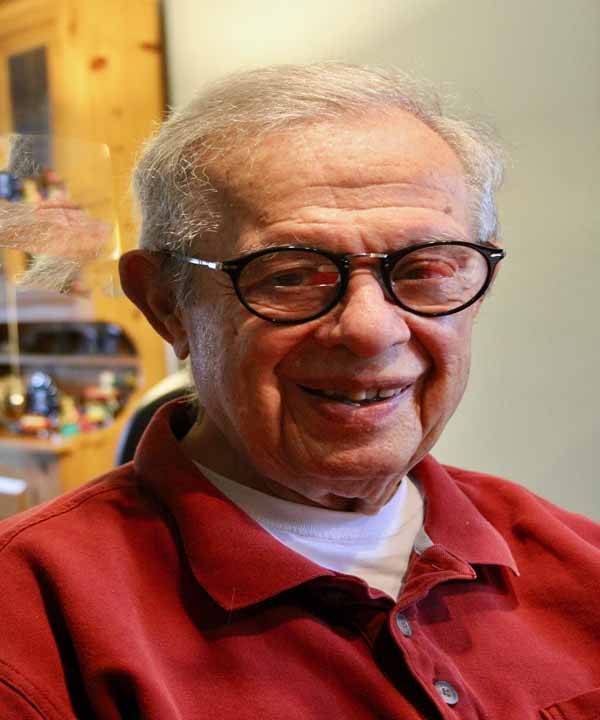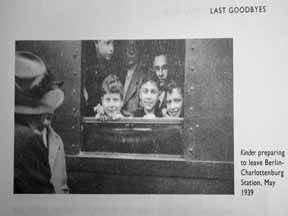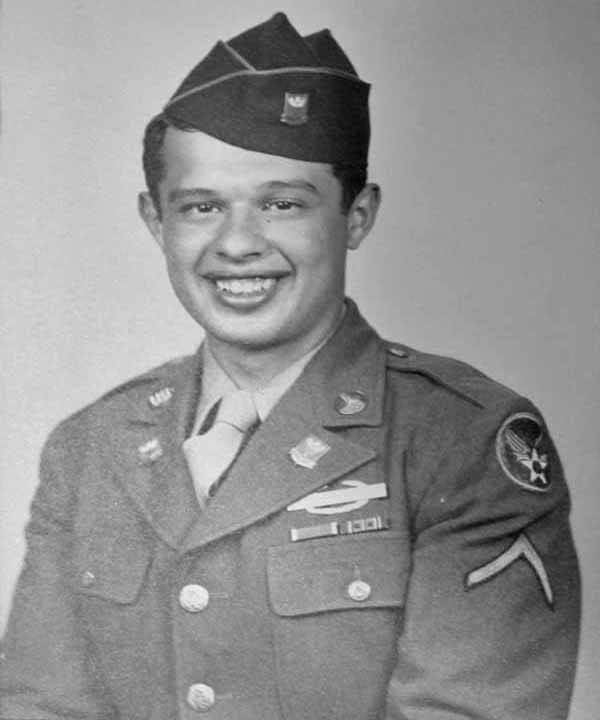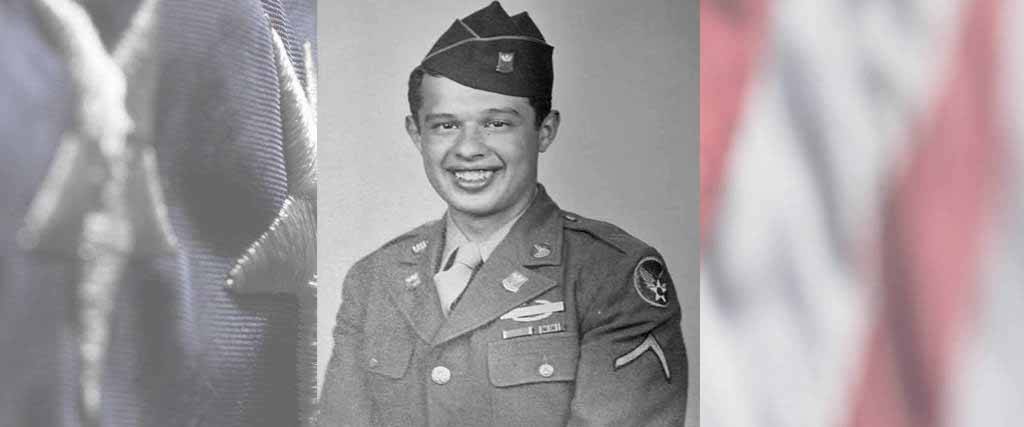U.S. Army World War II Chicago, IL Flight date: April, 2019
By David Adams, Honor Flight Chicago Veteran Interviews Volunteer
Walter Mannaberg was born in Breslau, Silesia, Germany (now Wrocław, Poland) in 1925. He and his family lived there until 1939, when at the age of 13 he was relocated to England as a result of persecution of the Jews by the Nazi regime. His family secured him a place in the Jewish children relief operation called Kindertransport. Just five days after Kristallnacht in November 1938, the British government had pledged to permit admission of unaccompanied Jewish children.
From December, 1938 to the end of August 1939, more than 10,000 children from Germany, Austria and Czechoslovakia were relocated to England. Most never reunited with their parents. Walter recalls leaving Germany in May, 1939, on a train from the Berlin-Charlottenburg station.


The film documenting the Kindertransport, “Into the Arms of Strangers,” earned the 2000 Academy Award for a documentary feature film. Walter says that the film validates his experiences and that he appears in one still photo, peering out of a railway coach with several other children. He is the child in the lower right-hand corner of the window.
Upon arriving in London, Walter met his sponsor and guardian, Mr. Gardner, a British solicitor, living in Sandwich, Kent. Walter spoke just a few words of English and Gardner no German. The disparity in language skills was common for Kindertransport children and the guardian families. He was enrolled in an English boarding school; after about 2-and-a-half years there, he then attended a “builders’ school” in Leeds, Yorkshire. Walter immigrated to the United States from Leeds in November, 1942, and joined his birth parents in Chicago. In late 1939, shortly after getting Walter on the Kindertransport, his parents had fled Germany, gaining residency in Panama for a time. They then immigrated to the United States from Panama, settling in Chicago.
Because Walter’s course work in England did not fulfill American high school requirements, he finished his secondary education at Marshall High School, graduating in 1943. He registered for the draft once he turned 18. As Walter says, “The draft caught up with me on March 21, 1944.” After induction processing at Fort Sheridan, he had three months of Basic Training in Little Rock, Arkansas. He remarked that the training was conducted by officers, who according to Walter were known as “90-day wonders.” While in Basic, Walter became a naturalized American citizen.
Walter was assigned to the “Checkerboards” 99th Infantry Division as part of the messenger center. He also qualified as a member of a two-man bazooka team. He handled the “tube” while another soldier carried the ammunition. According to Division history, the 99th arrived in the European Theater in October, 1944, and traveled to Belgium to the then existing front lines which meandered between Belgium and Germany. Walter’s Division fought in the Battle of the Bulge, December 16, 1944, to January 25, 1945. It famously held back the 1st SS Panzer Division, 6th Panzer Army, keeping German armor from moving into Belgium and the Netherlands. Walter vividly remembers two German weapons in particular, the Tiger tank and the 88mm anti-aircraft artillery piece. He recalls that the Germans also used the “88” as artillery against Allied ground forces. Walter’s two-man bazooka team did not have an opportunity to engage the Tiger because by the time he encountered one, the German tanks had already been destroyed or abandoned due to lack of fuel.

Walter states that in an early engagement, the regiment’s German interpreter was killed by a sniper. His colonel noticed Walter’s German accent and, on the spot, made him the German interpreter and a POW interrogator. From then on, whenever an interpreter was needed Walter was called upon. His German-accented English posed a problem once in January 1945; while crossing a snowy field he was stopped by an American patrol and “captured.” The soldiers believed he was a German infiltrator sent behind Allied lines to spy. He was taken to company headquarters and once his bona fides were established, he was released. Walter also recalls escorting four captured German soldiers for interrogation. When asked if he had misgivings being a lone soldier taking charge of four combatants, he said, “No, they were older men, fathers, and grateful for being captured by Americans and not Russians.” All in all, Walter found his having been raised in Germany and escaping Nazi persecution and then later interrogating German soldiers was, in his words, “Schadenfreude” (pleasure derived by someone from another person’s misfortune) and a duty he “enjoyed immensely.”
On March 11, 1945, Walter’s division crossed the Rhine on the Ludendorff Bridge, known also as the “Bridge at Remagen.” Division history informs that the 99th was the first complete division to cross the Rhine. He remembers Remagen as “the old bridge.” Two days after the crossing, Walter received wounds ending his active combat service. As he describes it, “We marched and marched, got to the top of a hill, and had a small fire fight. From there I could see planes without propellers.” Neither he nor any of his buddies had ever seen these aircraft before, the Me 262 jet fighter introduced by Nazi Germany. Soon thereafter an artillery shell exploded nearby, wounding Walter and others in his squad. Walter suffered very serious shrapnel wounds and was evacuated from the battlefield as “a litter case,” he remembers. Surgeons removed some but not all the shrapnel, bits he carries to this day. He has the x-rays to prove it. His recovery continued in England, then back in the States at a Texas hospital.
In Texas, the Army transferred him to the Army Air Corps. While American forces prepared for the invasion of Japan, the war ended. Walter was honorably discharged and separated from the Army Air Corps at Fort Sam Houston, Texas, on May 2, 1946. As a result of his service, Walter earned decorations and citations including the Combat Infantryman Badge, Purple Heart, American Theater Campaign Ribbon, European-African-Middle Eastern (EAME) Campaign Medal with 2 bronze stars (representing the Ardennes-Alsace and Rhineland campaigns), Victory Ribbon, and Good Conduct Medal.
Upon arriving back in Chicago, Walter enrolled in college, taking advantage of the G.I. Bill. He began his college studies at Navy Pier and graduated from the University of Illinois, Champaign-Urbana in 1950 with a degree in architecture. From then on, he was never without work. He worked as an architect and later a project manager for the City of Chicago Bureau of Architecture from 1967 to 1992, retiring on his 67th birthday. Walter and Eva have been married 63 years. They have three children, five grandchildren, and two great-grandchildren and still live in the same home in which all children were raised.



